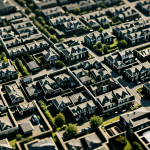Overview of British Home Design Evolution
British home design trends reflect an ongoing dialogue between cultural values, technological advances, and historical events. The timeline of British housing begins with Medieval timber-framed cottages, characterized by simple, functional structures. The Renaissance sparked the rise of Georgian architecture (early 18th century), notable for its symmetry and classical detail, coinciding with Britain’s expanding empire and wealth.
Moving into the Victorian era, a surge in industrialisation introduced mass-produced materials, enabling more ornate and diverse housing styles across expanding urban areas. This period emphasized decorative facades and complex floor plans, aligning with the rising middle class’s aspirations.
Also read : How Can You Transform Your Living Space with UK-Inspired Design?
The 20th century saw significant shifts driven by wars and modernism. Post-WWI housing focused on practicality, with semi-detached homes and garden suburbs promoting healthier living environments. The brutalist and modernist movements introduced urban tower blocks after WWII, reflecting social housing needs.
Each architectural milestone correlated closely with social and economic changes. From aristocratic estates to modest terraces, British homes mirror a dynamic history shaped by evolving tastes and societal demands, illustrating how historical British architecture embodies more than style—it encapsulates the nation’s story.
Have you seen this : What Are the Key Benefits of Sustainable Home Practices in the UK?
Architectural Shifts and Their Societal Implications
British architecture has long mirrored societal change, revealing how collective values and needs shape living spaces. The transition from sprawling aristocratic estates to compact suburban housing marked a profound shift in lifestyle and social structure. This evolution, a key chapter in the timeline of British housing, was driven by expanding urban populations and the desire for accessible family-oriented homes.
Industrialisation introduced new construction techniques and materials like steel and concrete, accelerating urbanisation and reshaping British home design trends. These innovations enabled housing to grow vertically—resulting in tower blocks—and horizontally, with more planned suburban estates. The societal pressure to accommodate workers and their families influenced the layout of homes, emphasizing functionality over ornate decoration seen in earlier eras.
Prominent iconic British homes, ranging from Victorian terraces to modernist estates, illustrate these shifts. The Victorian period’s ornate yet utilitarian houses catered to a rising middle class eager to express identity through housing. Later, post-war social housing projects embodied egalitarian principles, focusing on communal facilities and efficient use of space.
The interplay between political reform, economic fluctuations, and urban planning remains a constant thread that shapes British architecture, reflecting the nation’s evolving social fabric through its built environment.
Overview of British Home Design Evolution
The timeline of British housing charts a vivid course from medieval simplicity to sophisticated modernity, reflecting broader historical shifts. Early British home design trends saw Medieval timber-framed cottages prioritize functionality with minimal ornamentation. By the 18th century, Georgian architecture emerged, featuring symmetry, proportion, and classical influences, paralleling Britain’s imperial rise.
Victorian Britain marked a peak in decorative detail and varied styles, spurred by industrialisation, which introduced mass-produced materials and new building techniques. This era’s homes, like terraces and semi-detached houses, symbolized middle-class prosperity and urban expansion.
The 20th century pushed British home design towards practicality and social purpose. Both World Wars impacted architecture, leading to garden suburbs promoting healthier living and later modernist styles addressing housing shortages through tower blocks.
Thus, historical British architecture not only highlights evolving aesthetics but also serves as a mirror to societal needs, economic flux, and technological advancements over centuries. These British home design trends tell a story of adaptation, blending tradition with innovation, and continuously redefining domestic spaces to suit the times.
Overview of British Home Design Evolution
The timeline of British housing maps a rich progression, tracing how historical British architecture adapted to social and technological changes. Beginning with simple, functional Medieval cottages, British home design trends evolved through distinctive periods. The Georgian era introduced balanced proportions and classical motifs, reflecting Britain’s growing prestige during the 18th century.
By the Victorian age, industrialisation accelerated the production of building materials, enabling intricate facades and varied housing types, such as terraced and semi-detached homes. This era exemplified middle-class aspirations and urban expansion. Key architectural milestones of the 20th century include the garden suburb movement post-WWI, promoting healthier living with green spaces, followed by the rise of modernist housing after WWII, especially the construction of tower blocks designed to meet urgent social needs.
Throughout the timeline of British housing, architectural shifts closely align with major historical events like industrialisation, imperial expansion, and global conflicts. British home design trends not only reflect evolving aesthetics but also serve as a mirror to changing lifestyles, economic factors, and innovations in construction technology over centuries.
Overview of British Home Design Evolution
The timeline of British housing showcases a rich progression shaped by several defining eras, each leaving a distinct architectural signature. Early British homes, like medieval cottages, emphasized simplicity and utility, catering to rural lifestyles. The Georgian period elevated British home design trends with its focus on balance, proportion, and classical details, symbolizing growing wealth and stability in the 18th century.
Moving into the Victorian era, the rise of industrialisation introduced mass-produced bricks and cast iron, enabling intricate facades and the popularisation of terraced and semi-detached houses. This period saw a surge in housing styles reflecting the ambitions of the burgeoning middle class. Following this, the 20th century’s historical British architecture responded to societal upheavals—garden suburbs emerged post-WWI, blending green space with community living, while post-WWII modernism favored vertical growth through tower blocks to address housing shortages.
Throughout these eras, British home design trends not only tracked aesthetic evolution but also mirrored social and economic shifts. Each milestone connects closely with historical events, illustrating how architectural innovation continually adapted to the nation’s changing needs and values.
Overview of British Home Design Evolution
The timeline of British housing traces a clear progression from Medieval simplicity through intricate Victorian styles to modern functionalism. Early homes, such as timber-framed cottages, prioritized practicality suited to rural life. The Georgian era then introduced symmetry and classical refinement, reflecting Britain’s wealth expansion.
Victorian Britain brought a pivotal shift with industrialisation, enabling the production of popular terraced and semi-detached houses. These British home design trends catered to burgeoning middle-class aspirations for decorative yet practical residences. As the 20th century unfolded, the impact of two world wars reshaped historical British architecture, prioritizing healthier living environments like garden suburbs post-WWI and efficient social housing in tower blocks post-WWII.
Each architectural milestone aligns closely with broader historical events. Industrial growth, imperial ambitions, and wartime necessities directed innovations in materials, scale, and design philosophy. This blend of aesthetics and social response illustrates how British homes evolved not only as shelter but as markers of societal values and technological progress through time.






